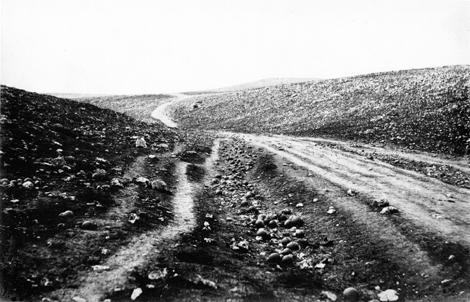A Conversation With Errol Morris On The Nature Of Truth, Photography, And Documentary
We may receive a commission on purchases made from links.
Director Errol Morris has made a career out of solving mysteries, which comes as no surprise since the man used to be a private detective. Whether he was exonerating Randall Dale Adams in The Thin Blue Line or unraveling a sordid sex tale in Tabloid, Morris has deftly used his subjects to provide gripping accounts of situations that have been wrapped in intrigue and ambiguity.
In his book, Believing is Seeing, Morris turns his attention to the art of photography. In a series of photographic whodunnits, Morris explores the truth-telling capacity of photos. His conclusion? "Photographs don't have truth value."
I had a chance to sit down with Morris in his Cambridge, MA office during his recent book tour and chat extensively with him about the nature of photography, the plausibility of re-enactments, and Joyce McKinney's controversial reaction to Tabloid. After the break, read highlights of my discussion with Morris. Below, you can also download and listen to the entire hour-long interview I had with him. You can buy his book at Amazon or in bookstores. Tabloid is now also for sale on DVD.
Download or Play Now in your Browser:
Subscribe to the /Filmcast:
Early on in our conversation, Morris asserted that "Photographs don't have truth value. There aren't photographs that are more true than other photographs. They're all equally devoid of truth or falsity. Truth or falsity, properly considered, are about the relationship of language to the world, not about photograph images to the world." Asserting that a photo is true or false particularly gets you into trouble when a photographer takes multiple images.
Morris's book begins with an exploration of two photographs taken by Roger Fenton about 150 years ago.


Taken during the Crimean War, the photos depict the same scene. In the first photograph, which Morris dubs "OFF," there are cannonballs scattered on the side of the road, while in the second photograph, dubbed "ON," the cannonballs are on the side of the road AND in the middle of the road. Which one of them is an accurate depiction of the scene? Which one of them is "true," as it were?
"If you're convinced somehow that photographs are true or false or some are more true than others, you look at these two photographs and you say to yourself, 'Which is true and which is false?" Or 'Which is more true and which is more false?' I think the whole question is nonsense," Morris explains. Susan Sontag, in her book, Regarding the Pain of Others, asserted that Fenton had scattered the cannonballs onto the road to make it appear more war-battered before taking the second picture, ON. Morris could not see a logical justification for this assertion.
"How did she order them?" Morris asked. "It seems to me that she ordered them on the basis of imagining what Fenton's intentions were in producing those two photographs, and then the question becomes, well, how did she know what Fenton's intentions were?" In Believing is Seeing, Morris got to the bottom of this question and even traveled to the Crimea to determine the answer. Along the way, he reflected on why it is we believe the things we believe about photographs.
"Perhaps the entire philosophy of photography can be contained in these two images, just by thinking about them," Morris asserted.
Believing is Seeing reflects some of Morris's other tendencies, namely his attitude towards truth. Morris doesn't see himself as getting at the nature of truth. Rather, "It's almost the flip side of truth. Call it an obsession with error of the mistakes and errors that are made and why we may choose untruth instead of truth, if it is a choice at all," Morris said.
This is evident in Morris's film, The Thin Blue Line. That story involved people who passionately believed something that was false. Why does this happen? What caused them to develop and keep these beliefs? "I sometimes think we like some simple solution to the riddle of what's out there in the world, what's true, what's false, what exists, what doesn't exist, etc. But there are no simple solutions and that includes photography," Morris said. "Photography doesn't give us any secret access to the world, and yet people talk about it as though it does, as though somehow [there's] no need to worry about epistemology or anything like that anymore when a photograph is involved. And of course, that's nonsense."
Morris also believes these things concepts apply to filmmaking. He recalled, "When I first started making movies, there was a received idea about how you were supposed to make a documentary. Call it whatever you want: cinéma vérité, direct cinema, blah blah blah. But it was this idea of shooting with available light, shooting with a hand-held camera, the fly-on-the-wall idea. You're observing, you're not interacting, you're not altering." The implication was that by following these rules, arbitrary or not, one might somehow be able to produce something that was "truthful." But Morris rejected this idea. "Just because you adopt a style of shooting, somehow, truth doesn't pop up a kind of magic meat grinder that produces the truth," he insisted.
So what is it about photography that's so interesting? Most photographs are connected to the world in some way, a product of light and celluloid, the result of the work of a human being trying to capture reality. "Part of Believing is Seeing is trying to reach back," Morris explained. "A photograph is like a time machine. So, to reach back into that world and try to ask certain questions about what am I looking at."
As a fan of Morris's films and now his new book, I hope he'll keep asking his questions for many years to come.


